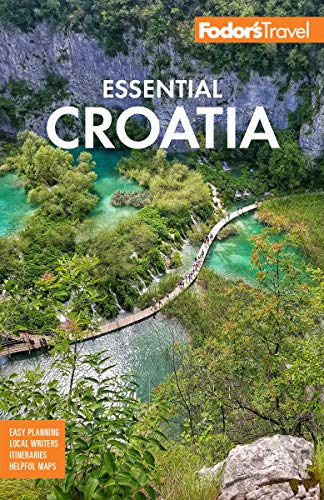On a tiny, 1,640-foot-wide island in a shallow, sandy lagoon that affords a spectacular view of the Velebit range to the northeast, Nin is connected to the mainland by two small bridges. The peaceful town of 1,700, a compact gem whose present-day size and unassuming attitude belie a stormy history, is well worth a visit, whether on the way to Zadar or as a day trip from there, assuming that the beautiful sand beaches stretching for miles around Nin don't inspire you to stay a bit longer.
Nin was a major settlement of the Liburnians, an Illyrian people who also settled Zadar, hundreds of years before the Romans came, conquered, and named it Aenona. A vital harbor for centuries, it was the first seat of Croatia's royalty, and was long the region's episcopal see, whose bishop was responsible for the conversion to Christianity of all Croatian territory. In 1382 the Venetians seized it and prospered from the trade in salt, livestock, and agriculture. However, the Venetian-Turkish wars eventually brought devastating onslaughts, including Nin's destruction in 1571; later, the Candian Wars of 1645–69 led to the decimation of Nin and the surrounding area yet again.
Aside from its historic buildings and monuments that testify to a rich past, Nin's draw also includes the only sandy beaches on this stretch of the Adriatic, not to mention the area's medicinal seaside mud. Since the sea here is shallow, water temperatures are warmer than in the rest of the Adriatic; moreover, the water is more saline, accounting for Nin's major export product—salt. But what would a Croatian coastal town be without the usual resort complex on its fringes? Holiday Village Zaton is a 15-minute walk from the Old Town.
If you're coming from Zadar, soon before you reach Nin proper, look to your left (your right if headed back toward Zadar) to see the squat, stony, 12th-century form of St. Nicholas's Church on a hillock out in the middle of a field, looking rather like a cake ornament, with a lone Scotch pine at the foot of the little hill keeping it company, as it were. You can enter Nin via one of two small bridges—the most likely of the two being the charming, pedestrian Donja Most (Lower Bridge), only yards from the tourist information office, which provides a helpful map that folds small enough to fit in your palm. If you're coming by car, you can park in a lot on the right just beyond the office and then cross the bridge, or else find a semi-legal spot along the road roughly opposite the lot, which plenty of enterprising visitors prefer.






